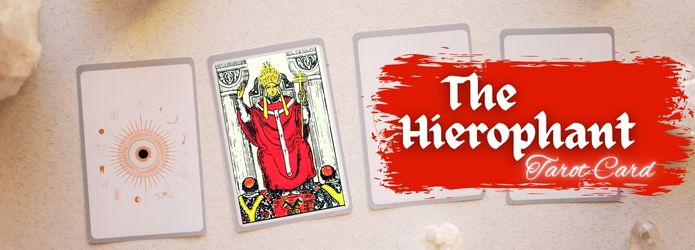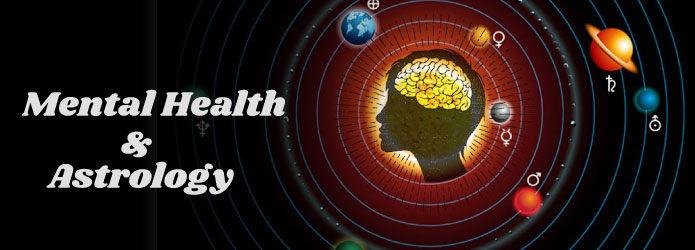
The Hierophant tarot card, the fifth card in the Major Arcana, represents tradition, conformity, spiritual wisdom, and institutional knowledge. Often referred to as "The Pope" or "The High Priest" in some tarot decks, the Hierophant embodies teachings from established belief systems, acting as a bridge between divine wisdom and human understanding. In this article, we’ll explore the Hierophant's symbolism, its spiritual and astrological associations, and what it reveals when it appears in various positions in a tarot reading.
Before delving into the details of the Hierophant card, it’s essential to understand the structure of the tarot and the significance of the Major Arcana:
Major Arcana: Made up of 22 cards, the Major Arcana reflects life’s major themes, pivotal experiences, and spiritual archetypes. Each card offers profound insights into personal and universal growth.
Minor Arcana: Consisting of 56 cards divided into four suits (Cups, Pentacles, Swords, and Wands), the Minor Arcana deals with everyday experiences, challenges, and smaller themes.
As the fifth card of the Major Arcana, the Hierophant stands as a figure of spiritual wisdom, echoing universal truths through established systems of faith, culture, and morality. His teachings emphasize learning through tradition and adhering to values that provide a structured path toward spiritual growth.
Each detail in the Hierophant card is rich with symbolism, carrying meanings that deepen our understanding of his role and message.
Typically depicted sitting on a throne in formal, often ecclesiastical attire, the Hierophant exudes a sense of authority and sacred wisdom. His robe often bears intricate patterns symbolizing knowledge, ritual, and spiritual discipline. This attire signifies his role as a teacher and moral guide, bridging the realms of the divine and the mundane.
The Hierophant holds a triple cross staff, symbolizing his authority over the three realms: the physical, mental, and spiritual. The three bars on the staff also represent the Holy Trinity, highlighting his connection to religious doctrines and established spiritual truths. This staff serves as a symbol of divine authority and alignment with the cosmic laws that govern creation.
Two crossed keys are often depicted at the Hierophant’s feet, representing access to spiritual knowledge and wisdom. These keys, commonly understood as the "keys to heaven," signify the unlocking of mysteries and the revelation of hidden truths. The golden key represents conscious knowledge, while the silver key symbolizes subconscious wisdom.
At the foot of the Hierophant, two supplicants (often monks or followers) kneel in reverence. This imagery reflects the tradition of passing down knowledge and the respect for those who have committed themselves to a spiritual path. Their presence represents the hierarchy of spiritual learning and the role of mentorship.
The Hierophant sits between two gray pillars, symbolizing stability and duality. These pillars echo the two contrasting forces of life, similar to the pillars seen in the High Priestess card. However, unlike the High Priestess, the Hierophant’s role is to teach, guide, and offer structure, emphasizing learning through established systems rather than intuitive wisdom.
The Hierophant’s primary role in a reading is as a messenger of traditional values, spiritual guidance, and formalized knowledge. His presence in a reading often suggests that a situation calls for structure, established practices, and guidance from conventional wisdom.
One of the central themes of the Hierophant card is tradition. This card encourages individuals to respect established systems, whether in the form of family traditions, religious beliefs, or cultural practices. The Hierophant suggests that there may be strength in following a conventional path, as these structures are built on time-tested wisdom.
As a spiritual leader, the Hierophant brings messages of divine wisdom and guidance. When this card appears, it may signify a need to seek counsel from a mentor, teacher, or spiritual advisor. It encourages individuals to learn from others’ experiences, acknowledging that spiritual growth often requires guidance from those with deeper knowledge.
The Hierophant is also a card of education, representing formal learning and the pursuit of knowledge. This card may appear when a person is embarking on a journey of study, such as enrolling in a program, joining a group, or seeking to deepen their understanding of a specific topic. It signifies that learning within a structured setting can lead to valuable insights and personal growth.
The Hierophant is a symbol of the structures that provide order and stability in life. His appearance may indicate that a situation requires adherence to rules, social norms, or legal frameworks. It suggests that following established procedures may be beneficial, especially when facing uncertainty.
On a deeper level, the Hierophant card represents a person’s moral and religious beliefs. It invites reflection on one’s values, ethics, and beliefs, encouraging alignment with core principles. This card calls for integrity, urging individuals to stay true to their spiritual beliefs while navigating life’s challenges.
In tarot readings, the placement of the Hierophant card in a spread can significantly affect its interpretation.
When the Hierophant appears in the past position, it often indicates that traditional beliefs or teachings have shaped one’s current circumstances. This card suggests that previous experiences with authority figures, family traditions, or educational institutions have influenced present-day decisions. Reflecting on how these influences shaped your current perspective can offer clarity and insight.
In the present position, the Hierophant indicates that guidance from an established source or a need for structure may be relevant now. It encourages individuals to seek wisdom, embrace formal education, or consult a mentor to help navigate current challenges. This placement suggests that adherence to traditional methods and respect for time-honored practices could lead to positive outcomes.
In the future position, the Hierophant signifies an upcoming period of learning, mentorship, or spiritual growth. This card suggests that guidance from a teacher or joining an organization may lead to valuable experiences. The Hierophant invites individuals to be open to guidance and recognize that growth may come from learning within a structured environment.
When the Hierophant appears reversed in a reading, it signals a departure from tradition, rebellion against conformity, or a challenge to established norms.
A reversed Hierophant may suggest a questioning of authority or traditional beliefs. This card indicates a time when an individual may feel constrained by established structures and desires to break free. It encourages examining whether certain beliefs align with personal values or are imposed by societal expectations.
The reversed Hierophant reflects a need for personal freedom and authenticity. This card may indicate a time of exploring unconventional paths, experimenting with alternative beliefs, or embracing spiritual practices outside mainstream traditions. It suggests that an individual is seeking independence from conventional structures.
In some cases, the reversed Hierophant represents rebellion against societal norms and rules. It may signify resistance to authority or a challenge to traditions that no longer serve personal growth. This card encourages finding new ways to express individuality and standing firm in one’s beliefs.
The Hierophant card is closely linked to Taurus, the astrological sign known for stability, loyalty, and adherence to tradition.
Taurus, ruled by Venus, is associated with grounded energy, stability, and an appreciation for the finer aspects of life. The association with Taurus reinforces the Hierophant’s themes of consistency, loyalty to established values, and an appreciation for rituals and structured practices. Taurus values persistence and dedication, which align with the Hierophant’s encouragement to follow a structured path for spiritual or personal growth.
The Hierophant card offers valuable guidance on how to incorporate its principles of structure, tradition, and wisdom into daily life:
The Hierophant encourages individuals to pursue formal education, mentorship, or spiritual guidance. Whether through enrolling in a course, consulting a trusted advisor, or exploring spiritual teachings, learning from established sources can enrich your understanding and personal growth.
The Hierophant’s message of tradition invites you to find strength in practices and beliefs passed down through generations. Engaging in rituals, whether family traditions, religious practices, or cultural celebrations, can provide a sense of belonging, continuity, and stability.
Reflecting on your moral and spiritual beliefs and aligning your actions with these core values is a key lesson from the Hierophant. This card encourages integrity, reminding you that staying true to your values enhances personal fulfillment.
The Hierophant emphasizes the importance of structure and routine. Establishing a daily or weekly routine, setting goals, or creating a plan of action can provide stability and promote productivity. Structure brings clarity, reduces stress, and helps achieve long-term objectives.
The Hierophant card underscores the value of respecting authority and following rules, particularly when these rules protect the well-being of a larger community. Recognize when following established guidelines can lead to positive results, and learn from those in positions of wisdom and authority.
The Hierophant is a symbol of tradition, wisdom, and the guidance found in structured teachings and institutions. This card emphasizes the importance of learning from established knowledge and understanding how traditional practices can foster spiritual and personal growth. Whether through education, mentorship, or adherence to one’s beliefs, the Hierophant guides individuals to honor their values and seek wisdom within established frameworks.

Many festivals are celebrated in India and Shardiya Navratri festival has a great historical background....

The mind is represented by moon, its placement, condition and afflictions in the birth chart. ...

Sawan Shivratri 2022 - Holy month of Sawan is going on. This month, Shivaratri is considered special....

Tirupati Balaji Temple is one of the richest temples located in Andhra Pradesh....